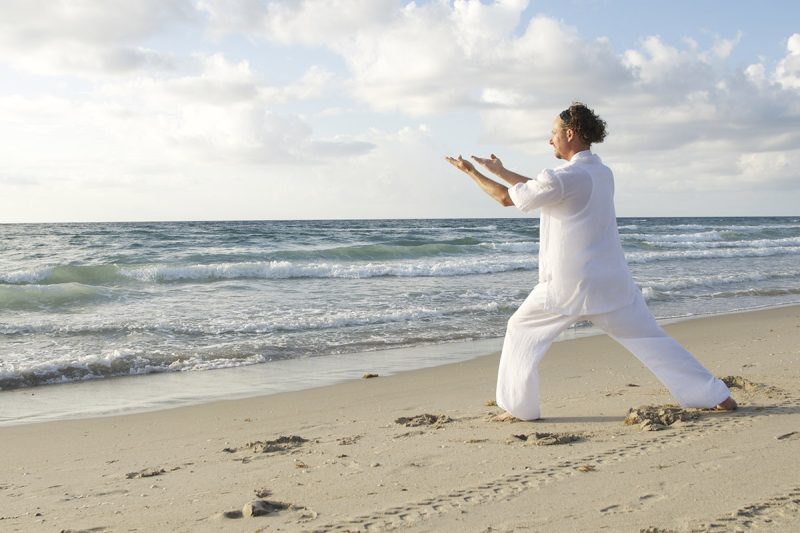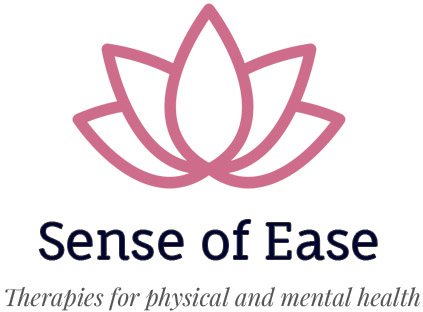Tai Chi
Tai Chi is a slow, gentle, flowing movement which is co-ordinated through the whole body. It follows a sequence of movements, usually referred to as the form.
Tai Chi is a holistic practice in that it does not just exercise the body, but the mind as well. It also allows us to become more aware of our psychological, emotional and spiritual self.
 The movement is only one part of Tai Chi. It is just as much about training the mind as it is about training the body. The growing awareness of breath, body and mind that comes with practice means that Tai Chi becomes a moving meditation, so the positive benefits of meditation needed in ‘stress management’ are accrued.
The movement is only one part of Tai Chi. It is just as much about training the mind as it is about training the body. The growing awareness of breath, body and mind that comes with practice means that Tai Chi becomes a moving meditation, so the positive benefits of meditation needed in ‘stress management’ are accrued.
Although there is a wealth of research being done on the benefits of Tai chi. The Harvard Medical School Research Guide to Tai Chi dedicates a whole chapter on ‘Proof of the promise.’
Through the Lens of modern science, it states that the following are benefits of Tai Chi practice:
- Improves Balance and Bones
- Improves Balance and Motor Control – especially in those with Parkinsons Disease
- Eases Aches and Pains
- Strengthens your Heart
- Deepens and Enriches Breathing
- Sharpens your Mind
- Enhances Psychological Well Being and Sleep Quality
Would you would like to learn more about our mindfulness practices?
How does Tai Chi work?
Dr Peter Wayne, a Harvard Medical School Professor and Tai Chi teacher, states that Tai Chi is a holistic and multicomponent exercise which affects us at a physical, psychological, social, and philosophical levels.
Through his research, he believes that there are 8 active ingredients of Tai Chi:
1. Awareness – including mindfulness and focused attention – perhaps the most fundamental component being the the slow deliberate movements and attention to breathing, body position and sensations.
2. Intention – including belief and intention – Imagery, visualisation and cognition. Imagery invokes the uses of our senses and so acts as a communication mechanism between perception, emotion and bodily change. Ideas and images might be used to help with the quality of a movement. For example, in standing like a tree, I might ask you to feel/ see roots coming out from the elba and feet deep in to the earth to elicit a feeling of stability, solidarity.
3. Integration – Enhanced integration within and between multiple bodily systems is another underlying factor in Tai Chi’s therapeutic effect. Biomechanically sound body shape and movements have been found to positively effect the endocrine system function and mood.
 4. Active Relaxation – Along with the positive effects of the efficient posture and alignment upon the connect tissue and nervous system. When we only ever work to a maximum of 70 %, when we “do less”, our tissues respond with greater, longer lasting relaxation and improved range of motion. Slow gradual movements allow the tissues to let go and unwind, reducing risk of injury. It allows us to respect tight areas reducing the ‘fear’ of causing injury.
4. Active Relaxation – Along with the positive effects of the efficient posture and alignment upon the connect tissue and nervous system. When we only ever work to a maximum of 70 %, when we “do less”, our tissues respond with greater, longer lasting relaxation and improved range of motion. Slow gradual movements allow the tissues to let go and unwind, reducing risk of injury. It allows us to respect tight areas reducing the ‘fear’ of causing injury.
5. Stretching and flexibility – is not only aided by the ‘active relaxation’ of Tai chi practice (see above). Simply, Tai Chi serves as an effective form of exercise – the slow continuous, relaxed moves act as dynamic stretching, enhancing flexibility.
6. Natural, freer breathing – Firstly, improved posture and having less tension and bracing, your body can breathe with less effort. This encourages a more natural breathing pattern, increasing the amount of air taken into the lungs and thus gaseous exchange. It has proven effective in the treatment of those suffer respiratory conditions. Focused attention on the breath is also a useful tool in calming the nervous system and learning mindful awareness.
7. Social support – Interactions, including students interacting with their instructor and other students, and more broadly feeling a sense of belonging to and identifying with a larger Tai Chi community has as huge positive impacts on health. Simply stated, being and feeling connected to others makes you healthier and happier, and fosters a longer life.
8. Embodied Spirituality – The core principles of Tai Chi are not only a road map for maintaining health but more generally as a guide for your path through life.
At its essence, Tai Chi is about letting go of the doing and learning how to be with what is. We are are human beings, and not human doings, after all!
